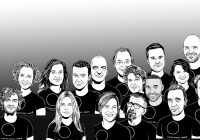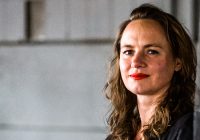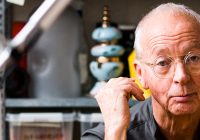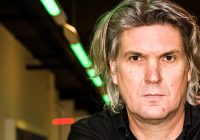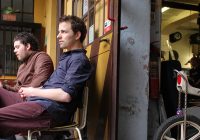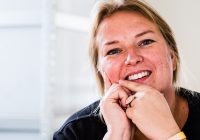“We are great at failure,” says Dutch designer Sarah van Gameren, one half of studio Glithero, with half a smile. “We have really been on stage with failure,” emphasises her British co-founder Tim Simpson.
Text by Anna Bates
Images by André Penteado
First, Van Gameren explains, was her installation Burn Burn Burn, a line of flammable paint drawn over furniture and across walls, to be travelled by a small flame. Designed with help of a chemist, the piece was selected to wow an audience of journalists, curators and visitors at Milan Furniture Fair, where it rather publicly failed to do the one thing it was supposed to do: set alight. Then was the duo’s Blueware collection for Craft Punk another live event. The pair set about using photosensitive chemicals to capture the impression of flowers on earthenware, creating blue vases decorated with the “ghost” of petals. But the blue lasted only a few hours before fading to white – a disaster they thought they solved, but which was repeated on a client’s wall tiles a few years later. Recounting the last story, Van Gameren looks at her feet: “It was terrible – we had to take the tiles off and do the wall again. It took us a long time to figure out why the blue was disappearing – but we are now experts at the process.”
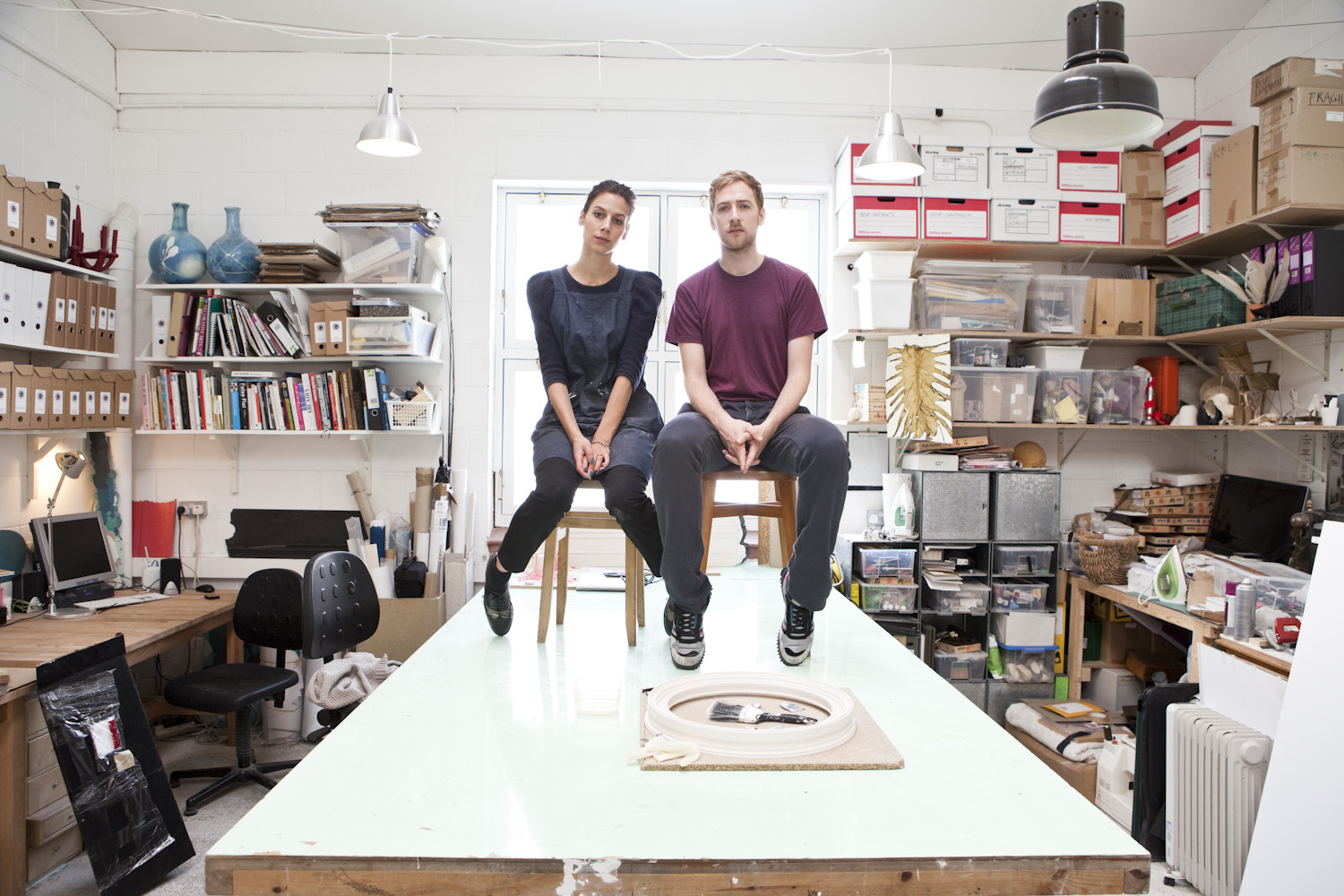
Sarah van Gameren and Tim Simpson
Such honest declarations are not often heard in the design world, where designers are encouraged to slap a thick layer of gloss over any problems a project encounters, and keep those that failed to themselves. But the Anglo-Dutch duo accepts hiccups are part of the design process; because they don’t just design products, they design the process of making a product. For them, it is not enough to present an object with no trace of how it was made. In the same way that we want food products to communicate the journey from farm to shelf, Glithero believes objects have some explaining to do. As designers, they aren’t alone in this sentiment, but what marks their work out is the fun they like to have; their work celebrates the spectacle – the theatre – of how stuff is made. So whether they’re re-modelling an envelope-folding machine so that it punches out paper planes, or building a machine to make candelabras – in the shape of a giant candelabra – their goal is to find the “essence of a process”, “that moment of a thing’s transformation” and take it to a wider audience, to “move people.”
In this sense, they are striving towards a new value system for consumerism. “We think the way we buy will change – it happens first with designers and artists, when they realise they aren’t satisfied buying a new colour every season, then it happens to the consumer,” says Van Gameren. By focussing on process, Glithero gives value to their products – even the mistakes add to the story. The turbulent two-year journey of their Blueware project, for example, saw them nominated for the Design Museum’s Designs of the Year prize. And the client who watched her blue bathroom turn white overnight recently commissioned an even larger installation by the duo. Such achievements mean Glithero must be doing something right. But is it enough for designers just to focus on process? The studio states in its manifesto that ‘the process is more important than the product’, but separated from process, can their products hold their own on the shop floor?
We meet at the duo’s workspace in North London, a former hot air balloon workshop, littered with prototypes, practice runs and half-baked concepts. My eyes fall on a cluster of miniature red tubes bent in all manner of directions: “This summer has been about ideas,” says Simpson, by way of explanation. The duo met studying for an MA in design at the Royal College of Art in London. Van Gameren was paired with Simpson, in the year above, to assist with his graduation show, “and from then on, we always worked behind the scenes on each other’s work,” says Simpson. But it was a wider preoccupation that drew the duo to collaborate further. Both were fascinated by machines, and by-gone processes, so they started writing a booklet ‘Miracle Machines and the Lost Industries’, which turned into a manifesto of sorts, and saw the duo slowly funnel their independent practices into one that was united.

Paper Planes. As part of the Wallpaper* Handmade exhibition in Milan 2011, Glithero presented the fruits of an original collaboration with Baddeley Brothers; five expertly crafted paper airplanes. Using traditional print press techniques and an unorthodox appropriation of an envelope-folding machine, the project is presented alongside a making-of film that pays homage to the faithful relationship between the printers and their machines.
They set up studio in 2008 – combining Van Gameren’s “risky, hands-on experimentalism” with Simpson’s “more methodical, conceptual” approach. “Sarah is definitely more in the moment than me,” says Simpson, turning to look at her: “You have no preconceived way of knowing what you will learn from an experiment you’re trying out,” he pauses – a fraction longer than comfortable – “and that’s really strong to have.” Van Gameren laughs. “Yeah – Tim all the time has this fantastic overview and understands when what I’m doing is a complete waste of time.” It’s interesting that as a BA graduate of Design Academy Eindhoven – a school renowned for its focus on conceptual design – Van Gameren takes the more applied approach. In fact, the designer sites her father, who works in physics, as a bigger influence than her time at DAE: “He must have kicked some genes in me,” she says. “Because to get ideas, I just throw random things together and see what happens.”
Van Gameren moved to London to distance herself from the Dutch pack, finding the remit of what “design” stands for in The Netherlands too narrow. “It’s difficult to be interdisciplinary there,” she says. “The people who give us work are in London; they’re the kind of people that believe in things that most people think are impossible.”
“The whole philosophy is very different,” says Simpson. “I think creativity can exist in two states; in a blank void where there is enough room to be creative, or in chaos, and it shows in the work produced. London is chaotic, and you have to be different to stand out. But Eindhoven…”
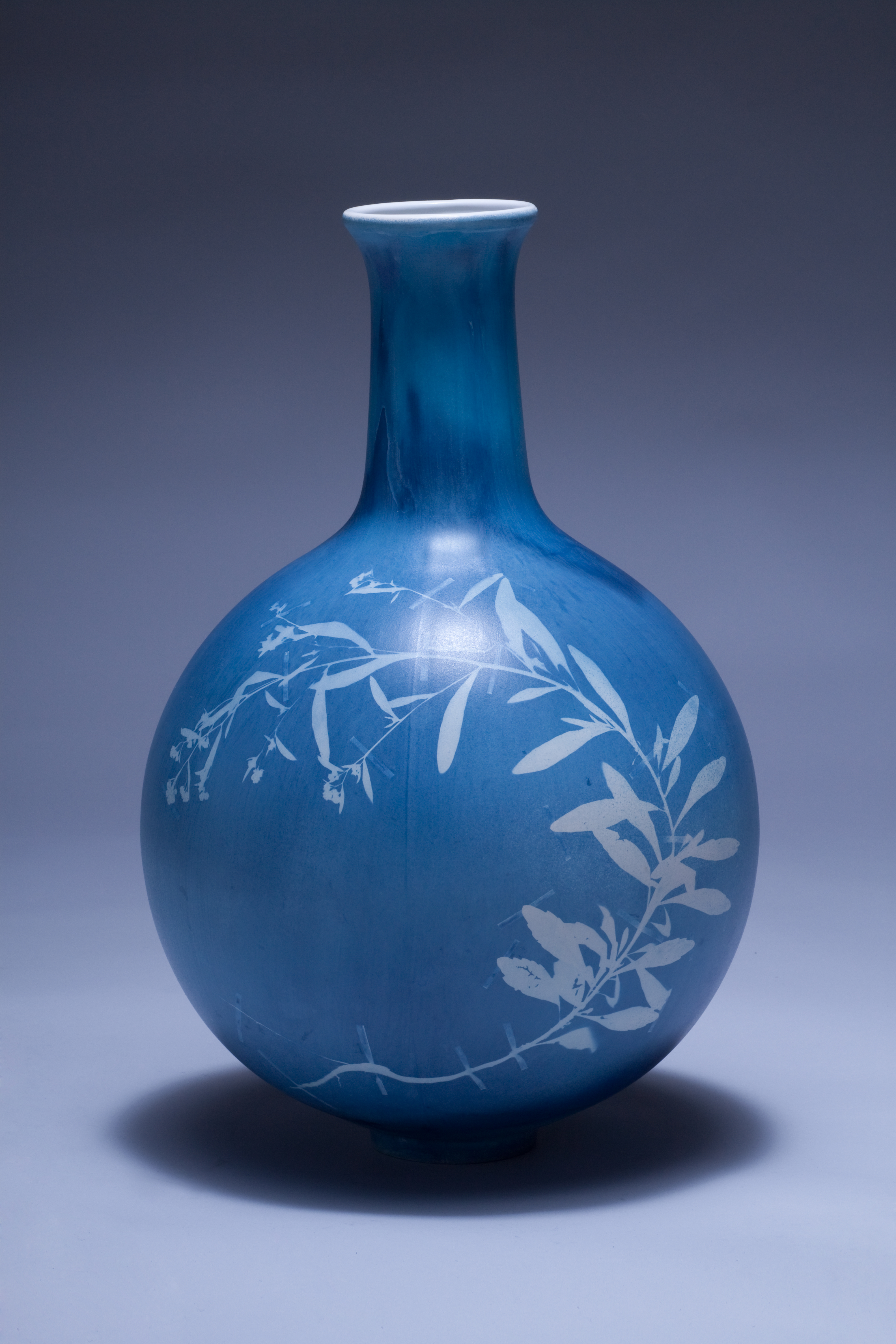
Blueware is a collection of ceramics with cyanotypes, a process of capturing direct impressions of botanical specimens (found on inner London borough pavements) on eartheware, using photosensitive chemicals. From one of the earliest principles of photography, to the historic affinity between ceramics and the colour blue, it is a project built upon the inventions of their Anglo-Dutch predecessors, shattered into small fragments, and kaleidoscopically rearranged.
“Is pure,” Van Gameren interrupts. “There is no distraction whatsoever, and so no real difference. You get this situation where someone designs an object, and then someone else designs the same object but improves it. Over time, the school ends up with a really strong, honed aesthetic. There are a lot of tricks we all use, that have been used over and over again. They always work, and they’re handy to know!”
So it’s no surprise that Van Gameren attributes the duo’s aesthetic prowess to her time at DAE: “I learned that right from the very first stages of doing something, you make it look good.” This might sound whimsical, but it has a lot to do with the studio’s success. By aestheticising their processes, they can trade on them – so as much effort goes into designing the films that narrate their processes, as their products. Click online, and you’ll see perfectly staged performances of the Big Dipper slowly dipping wicks into molten wax, with suitably evocative music playing in the background, or a close up of Van Gameren’s hands, delicately attaching flowers to earthenware before a sharp UV light beams the surface into a vibrant blue.
In a sense, these films compensate for the fact that the studio has yet to achieve its ultimate goal: “We want to merge that moment of pure creation with the outcome,” says Van Gameren, meaning that they want the moment of materialisation to be completely communicated in the final product. “This is the riddle we want to solve – and we are still trying to solve it,” she says. Their most recent attempt is Running Mould, a plaster bench made using techniques perfected by cornice makers, for a gallery in Belgium.

The Long Drop. Standing high on a ladder, a point is defined where it all begins. The substance flows like lava and marks a permanent pathe. The long drop is a poly-concrete table, cast in a wooden chute that resembles a roller-coaster. Buckets of fluid material are poured down and set rock-hard. When it is filled, the chute is dismantled leaving a table that is forever married with its pouring channel spiralling up through the air. Concrete drops and spills are frozen in the moment.
“There’s this moment where you scrape a hard piece of zinc through the plaster, and the form goes from an organic, blobby shape to this sharp profile. The transformation of the material became the thing we wanted to magnify and bring to a much bigger audience.” But while the process of making the piece looks like an enormous amount of fun (albeit it challenging), the final piece bares little obvious trace of how it was made process. To someone walking by after the event, the piece simply looks like what it is: a cornice in a semi-circular shape. The duo displayed the tooling they used – the plaster mixing station, the 3-metre long running mould and the pivot point bolted to the gallery room in the centre – providing clues as to how the piece materialised. And of course, they displayed a film of the process running on a loop. But if anything, the paraphernalia of the process does as much to demonstrate the difficulties of the duo’s mission: to communicate that moment of transformation in the finished product.
But then it can take the duo time to communicate an idea successfully; and to their credit, they have convinced previous cynics. “Our projects are such overall concepts, they are such a big story that it can take us two years to get it right,” says Van Gameren. “Then people who were not enthusiastic at the beginning suddenly are because we finally managed to communicate.”
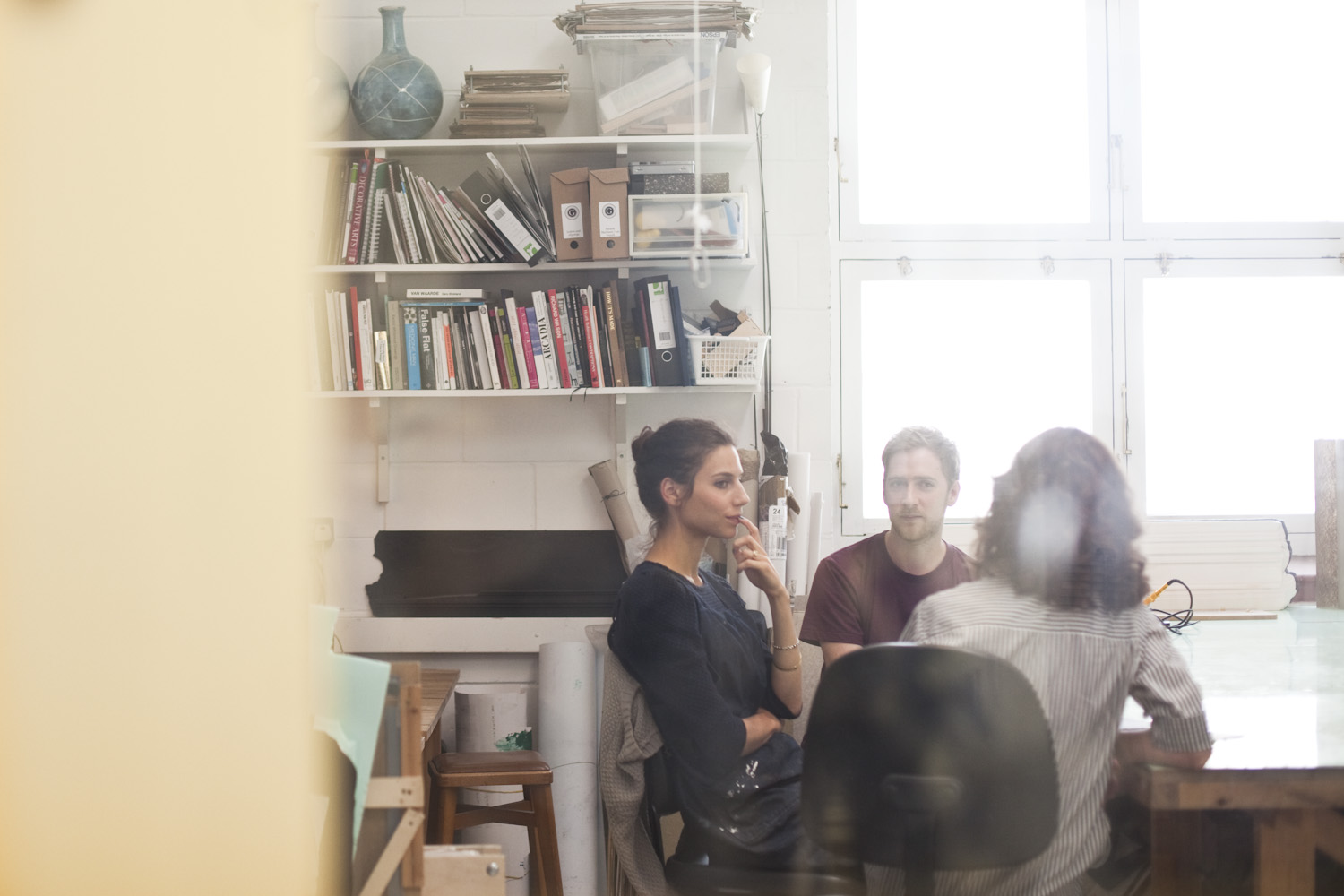
The draw back is that when it comes to buying, only a limited few can take these ideas home. The very nature of their process-led work makes mass-production difficult; and here their ideology of a new consumerism becomes problematic – but not impossible, the duo argues: “We think it is possible to reach different markets while staying close to a conceptual idea,” says Simpson, citing the studio’s Pique candles as an example. These self-supporting candles for Artecnica are a sibling of the Big Dipper chandeliers, and made using traditional techniques of hand-dipping. Delicately resting on a layer of wax droplets, they might not have the narrative charm of the originals, but they certainly bare reference to how they were made. But it’s actually in the ephemeral nature of this product that the duo’s message for a new consumerism is at its loudest. The candles, like the studio’s Paper Planes, are “anti objects – the candles disappear, and the planes are just folded from a piece of paper – they’re almost nothing,” says Simpson. “They exist to tell their story,” says Van Gameren. Even on the shop floor, the studio is asking consumers to buy into their philosophy – to enjoy the spectacle of process, to be curious about how stuff is made – rather than buy a product, in the traditional sense of the word.
This article was published in Connecting the Dots #3 for the London Design Festival 2011.
For entire magazine click here.



